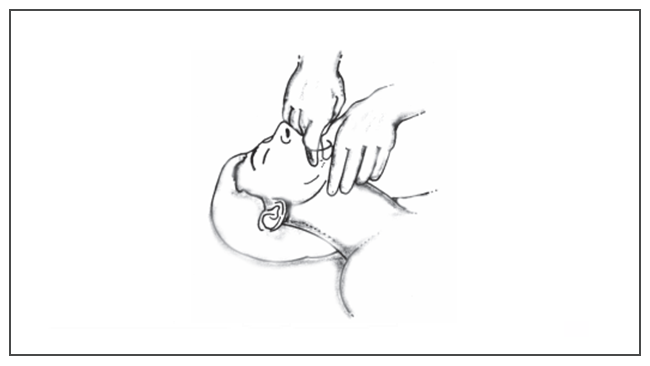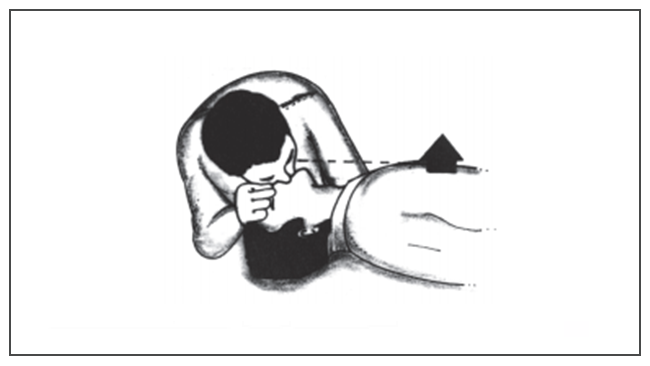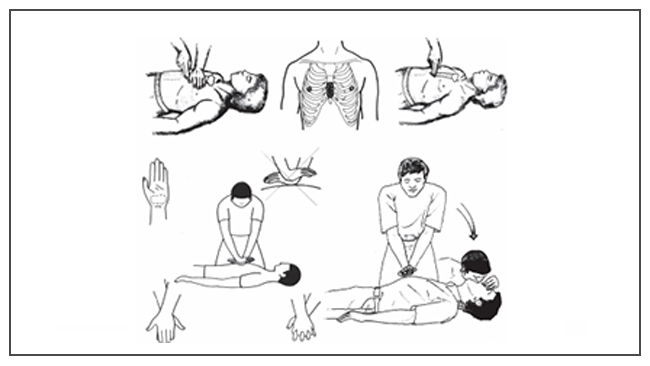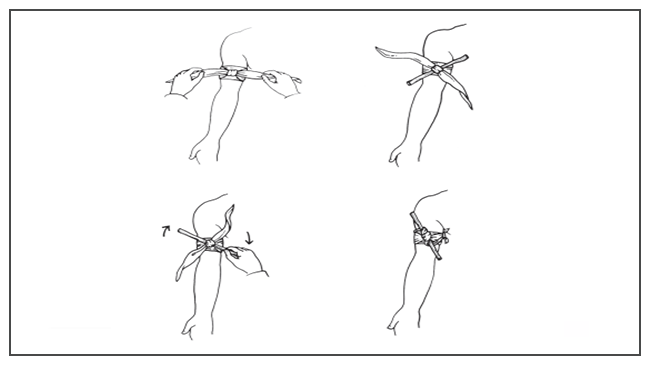First aid is urgent medical assistance procedures that must be provided to anyone who is suffering from sudden illness, injury and injury.
First aid can be performed by anyone with the aim of preserving life, preventing a worsening of the condition or enabling recovery. Measures must be taken immediately while professional help is not available. In this feeling, communicating specialized care is also a first aid measure.
The situations that require first aid are numerous. Each country has its own legislation and regulation on training or equipment provisions for each situation, such as first aid at school, in the workplace, in public meetings, etc.
First aid does not require advanced knowledge in the area and may involve improvisation with materials available at the time, in addition to being frequently performed by people without training.
First Aid Objectives
The main objectives of first aid can be summarized in three:
preserve life: the ultimate goal of any medical care. Through simple and preliminary measures, the aim is to save lives and minimize the chances of death.
prevent aggravation: involves prevention measures so that the condition does not worsen or that new causes occur. For this reason, first aid also covers external factors such as taking the patient away from a fire.
Enable recovery: First aid also aims to initiate recovery from illness, injury or injury as quickly as possible.
Examples of situations that require first aid
The situations that may require the provision of first aid are numerous, each one requiring a specific set of care. Among them, the most common are:
- Cardiorespiratory arrest
- hemorrhages
- fractures
- burns
- fainting
Basics of first aid
Despite the very high number of hypotheses that require first aid, there are some basic notions that can be applied to all of them:
watch the scene: Analyze whether there are any dangers near the patient or yourself. If there are, move the patient away before starting first aid procedures. If there's nothing you can do, just wait for expert help.
Analyze the victim's level of consciousness: When you are sure there are no dangers nearby, check that the patient is aware and alert. If so, ask questions and evaluate the answers to get a diagnosis. If not, ask for assistance as soon as possible.
check airways: Check if the patient's airway is free. Lay him on his back and tilt his head back slightly. Any obstructions need to be removed from the mouth, including dentures. It is common for the tongue itself to obstruct the air passage, and it must also be moved manually.

Source: Ministry of Health / FIOCRUZ
Types of First Aid
The most common causes that require the use of first aid are:
First aid in cases of cardiorespiratory arrest
Cardiorespiratory arrest is one of the most serious conditions that can be attended to through first aid. It is seen by lack of a pulse in some large artery and by apnea (absence of breathing). In these cases, the airways must be unblocked, artificial ventilation provided and circulatory support provided.
Mouth to mouth ressuscitation
Artificial ventilation consists of mouth-to-mouth respiration and must be done in the following sequence:
- lay the patient on his back
- Unclog the airway
- Tilt the patient's head so that the chin is at a level above the nose
- Close the patient's nostrils with your fingers, completely sealing the air passage through the nose
- Place the mouth over the patient's mouth in order to completely seal the air passage through the mouth and blow with force
- Lightly press the patient's stomach to expel air
- Repeat the process until specialized help arrives at the site

Source: Ministry of Health / FIOCRUZ
Cardiac massage
Circulatory support consists of cardiac massage and should be done as follows:
- lay the patient on his back
- Position yourself beside or over the patient so that you touch his chest with outstretched arms
- Rest one hand over the other and apply pressure to the underside of the sternum repetitively, without leaning on the chest wall. You should use your own body weight to increase pressure
- During the application of pressure, interspersed, the procedure must be stopped suddenly, as this also helps to restore blood flow
- Repeat the process until specialized help arrives at the site

Source: Ministry of Health / FIOCRUZ
First aid in case of bleeding
In cases of bleeding, the first measure to be taken is to apply pressure, through compresses, on the wound. The goal is to compress the artery against the nearest bone, so the pressure applied needs to be strong.
Next, it is necessary to elevate the injured region to a level above the heart in order to decrease the blood flow in the area. Elevation should not be done if there is a fracture.
In cases where bleeding is very heavy, a tourniquet should be used, as shown in the image below:

Source: Ministry of Health / FIOCRUZ
The purpose of the tourniquet is to completely obstruct the passage of blood to the area. Therefore, the rod must be turned until the fabric used is very tight. Every 10 or 15 minutes the tourniquet should be loosened briefly.
First aid in cases of fractures
Fractures are bone breaks that can result in loss of limb function. They can be either internal or external and usually have deformities in the affected site.
First, it is necessary to immobilize the affected limb and position it in the least painful way for the patient. The immobilization must be done with splints and padded fabrics, as shown in the image below:

Source: Ministry of Health / FIOCRUZ
It is essential that the splints are large enough to pass the lower and upper joints of the fracture.
Caution: Never try to put the fractured bone in place. In cases of open fracture, the bone should never be touched.
First aid in cases of burns
In cases of light burns, wash the affected area with water at room temperature. In more severe burns, keep the burned area protected with some damp cloth or gauze.
In any case, no type of ointment or product should be used, nor should any bubbles that eventually appear burst.
First aid in case of fainting
Fainting is caused by decreased blood and oxygen in the brain. In these cases, if the patient is starting to faint, he should be seated in a chair and bent over to front so that your head falls between the feathers, below the knee line, as shown in the image below and left:

Source: Ministry of Health / FIOCRUZ
In cases where the patient is already passed out, it is necessary to lie him down as shown in the image above and to the right, keeping his head at a lower level than the rest of the body. The goal is to restore blood flow to the brain.
It is important to note whether the fainted patient shows signs of vomiting. If so, the patient must be laid on their side.
